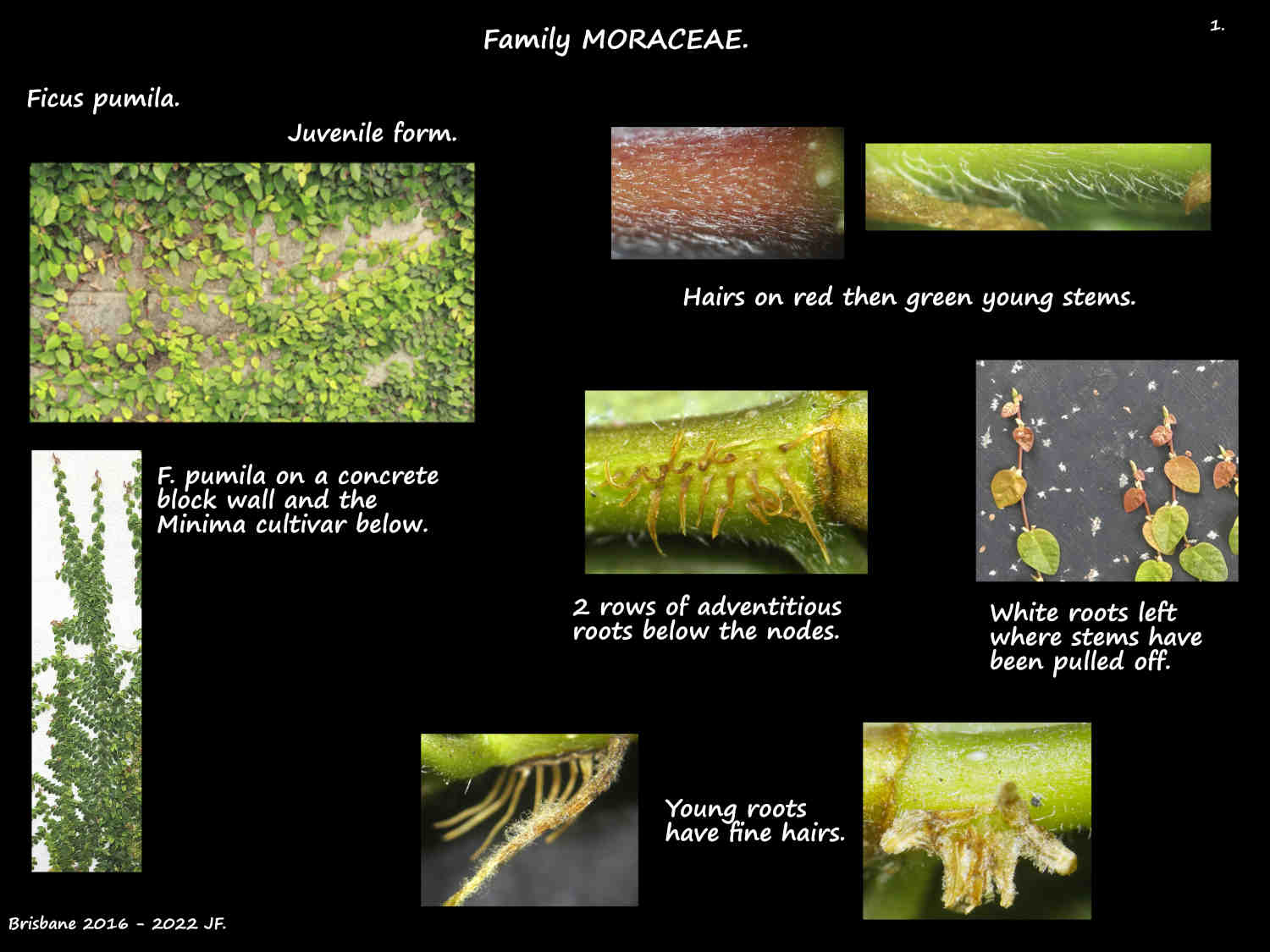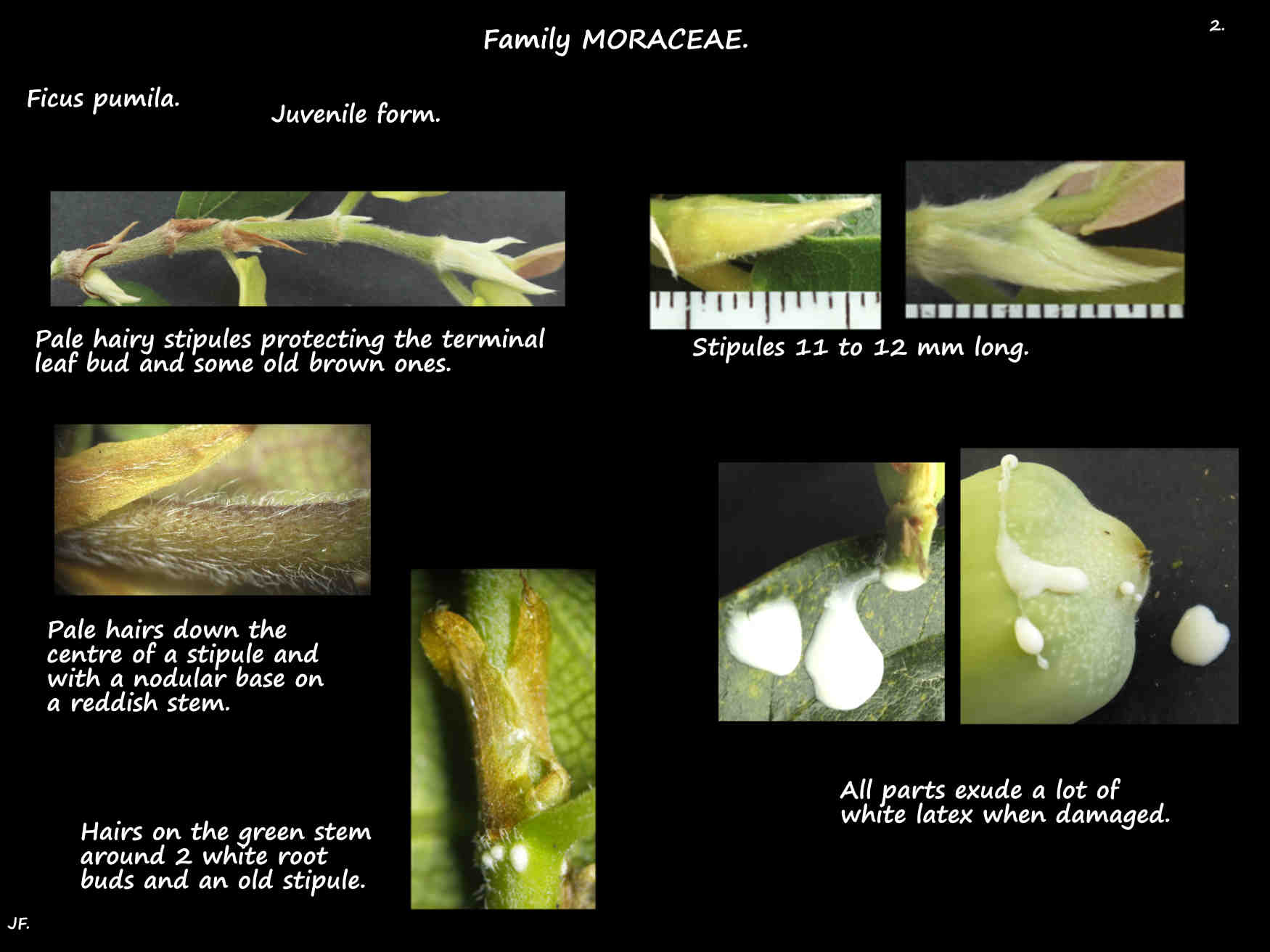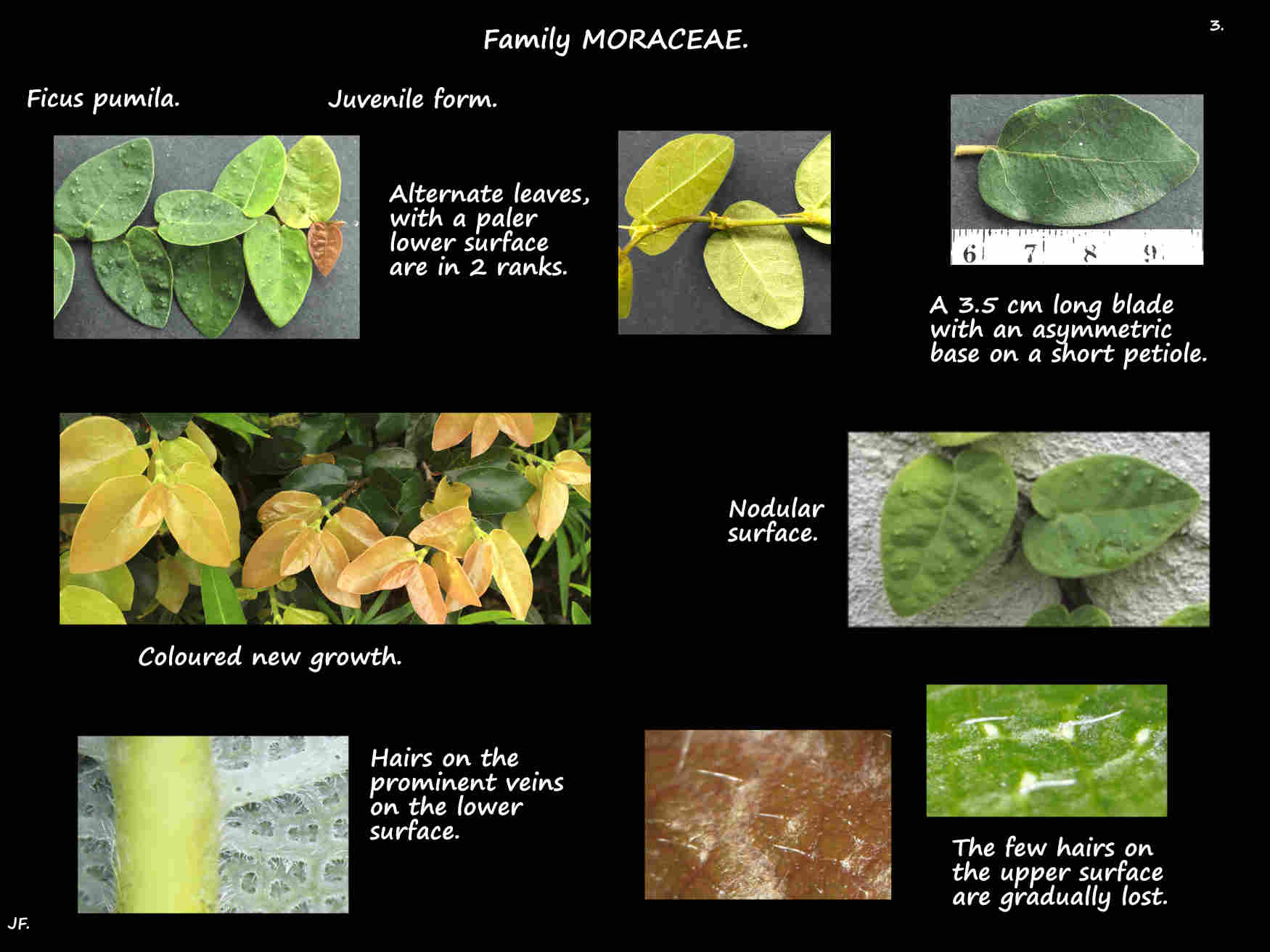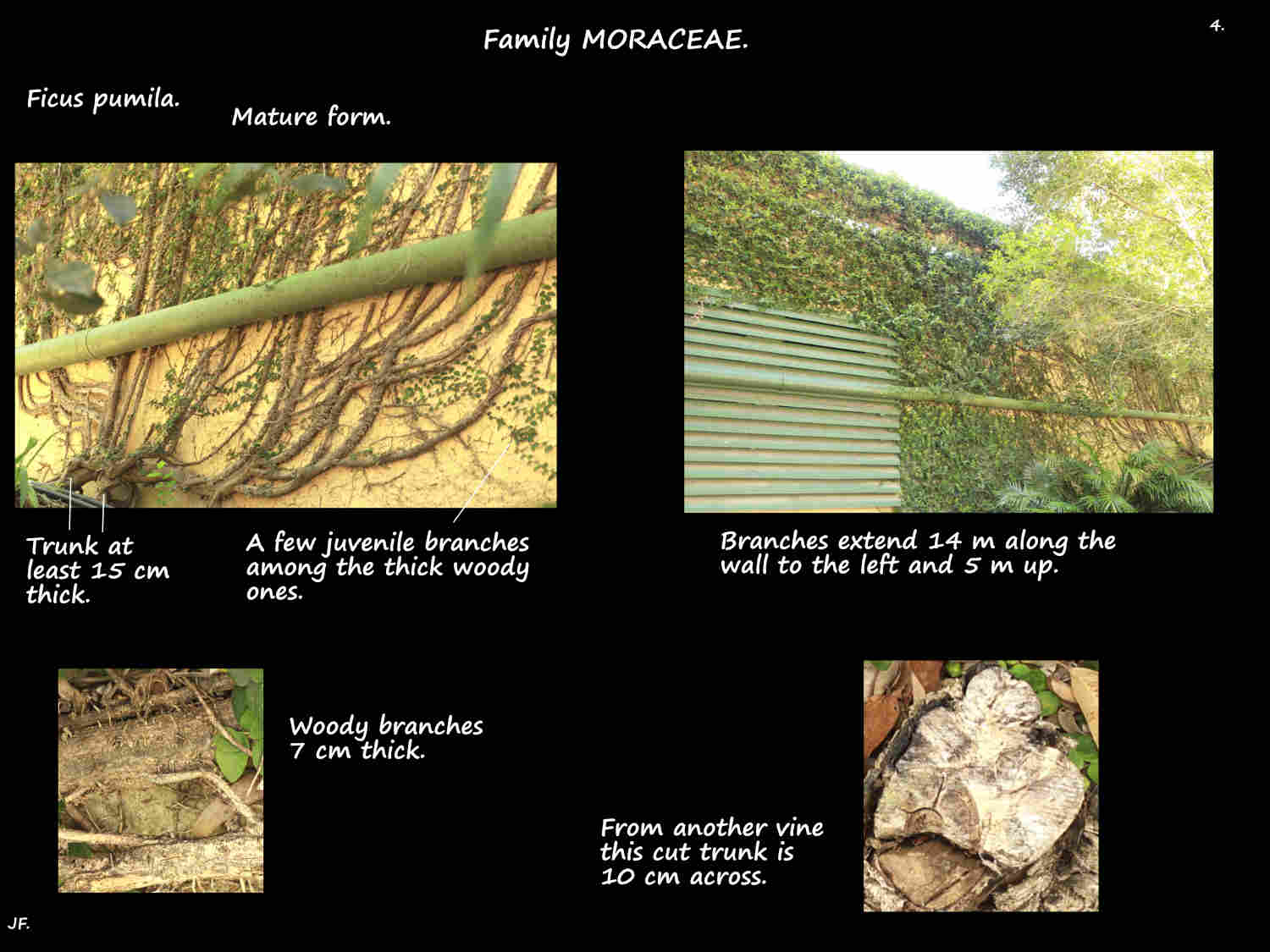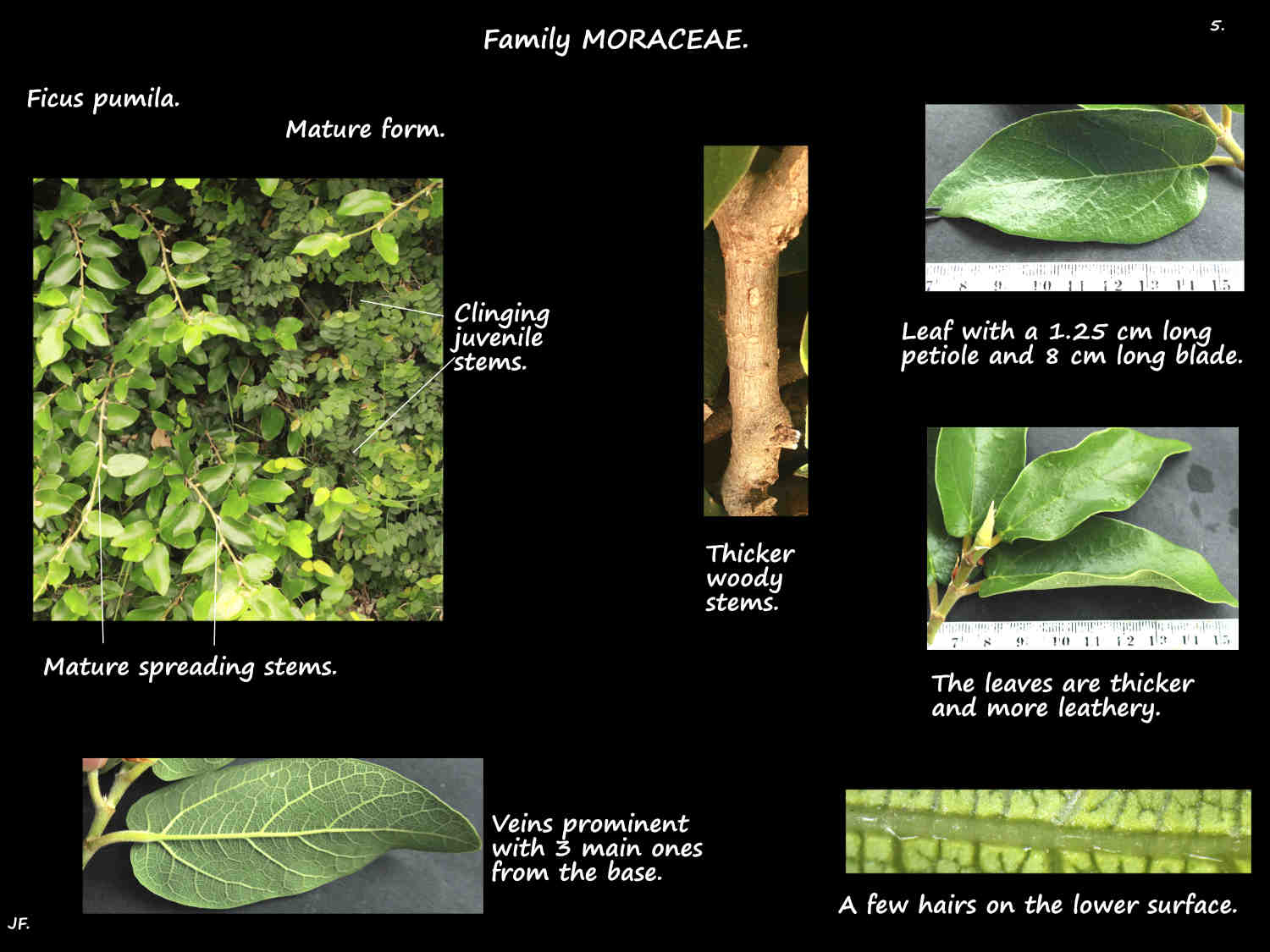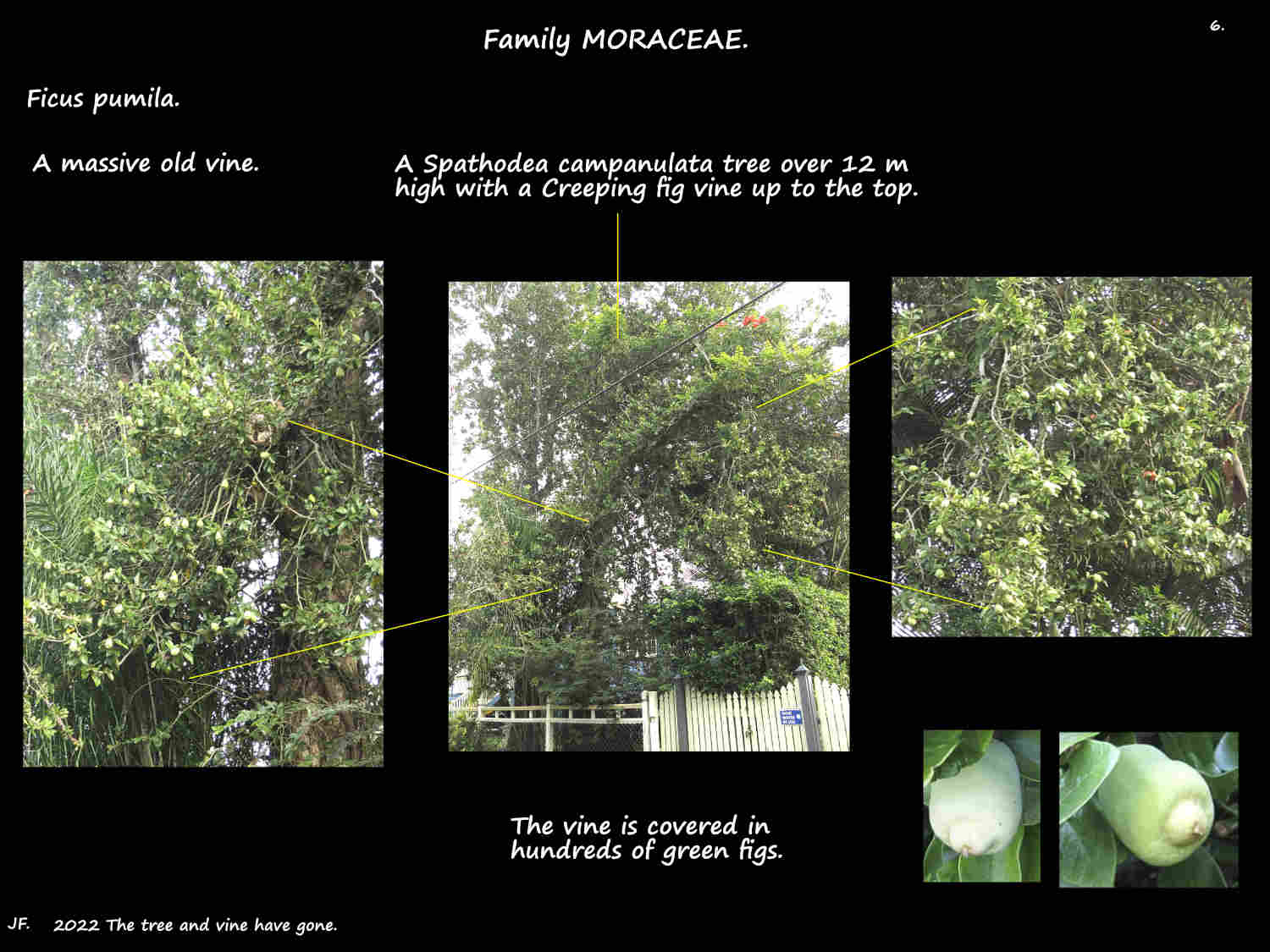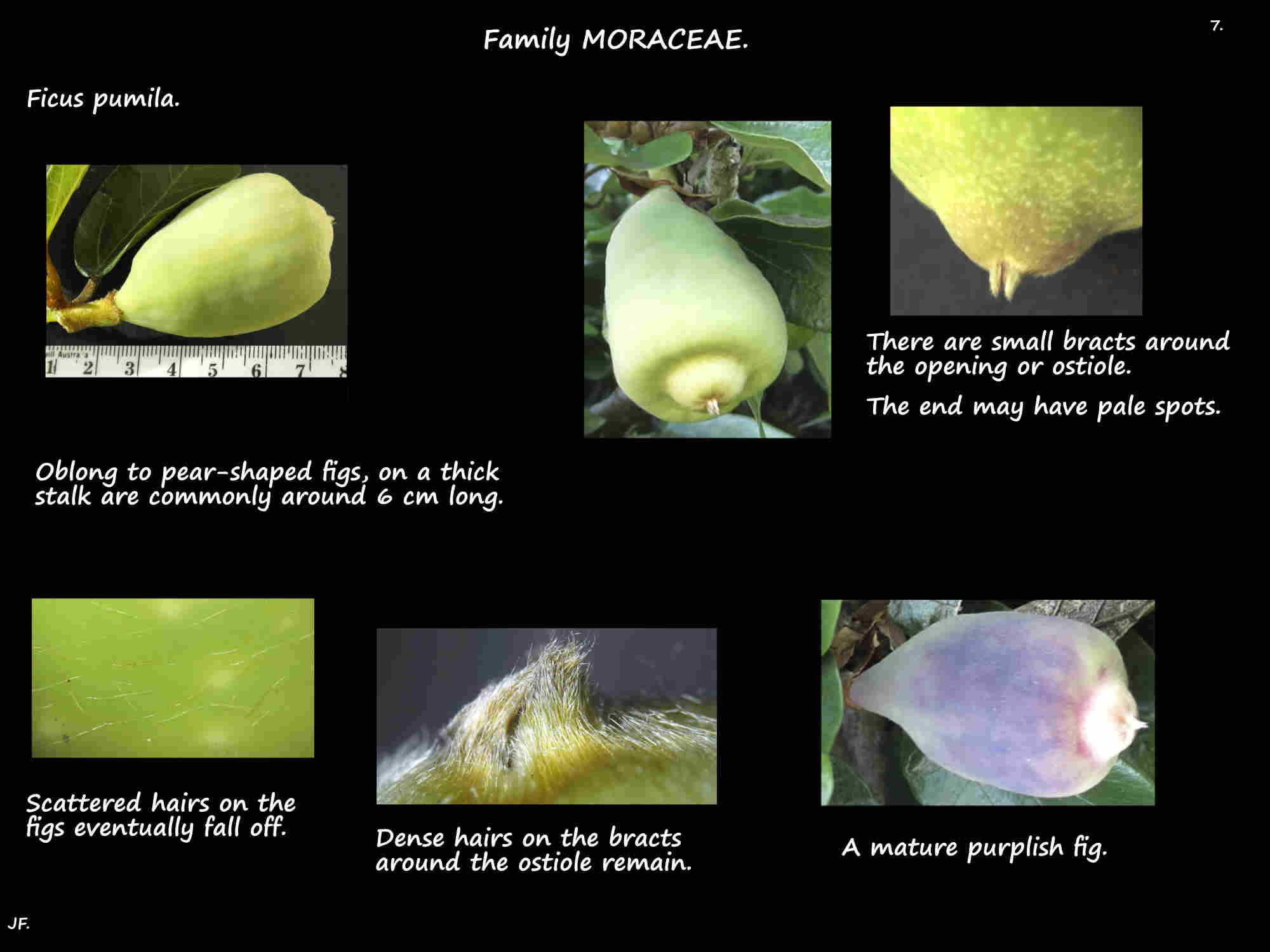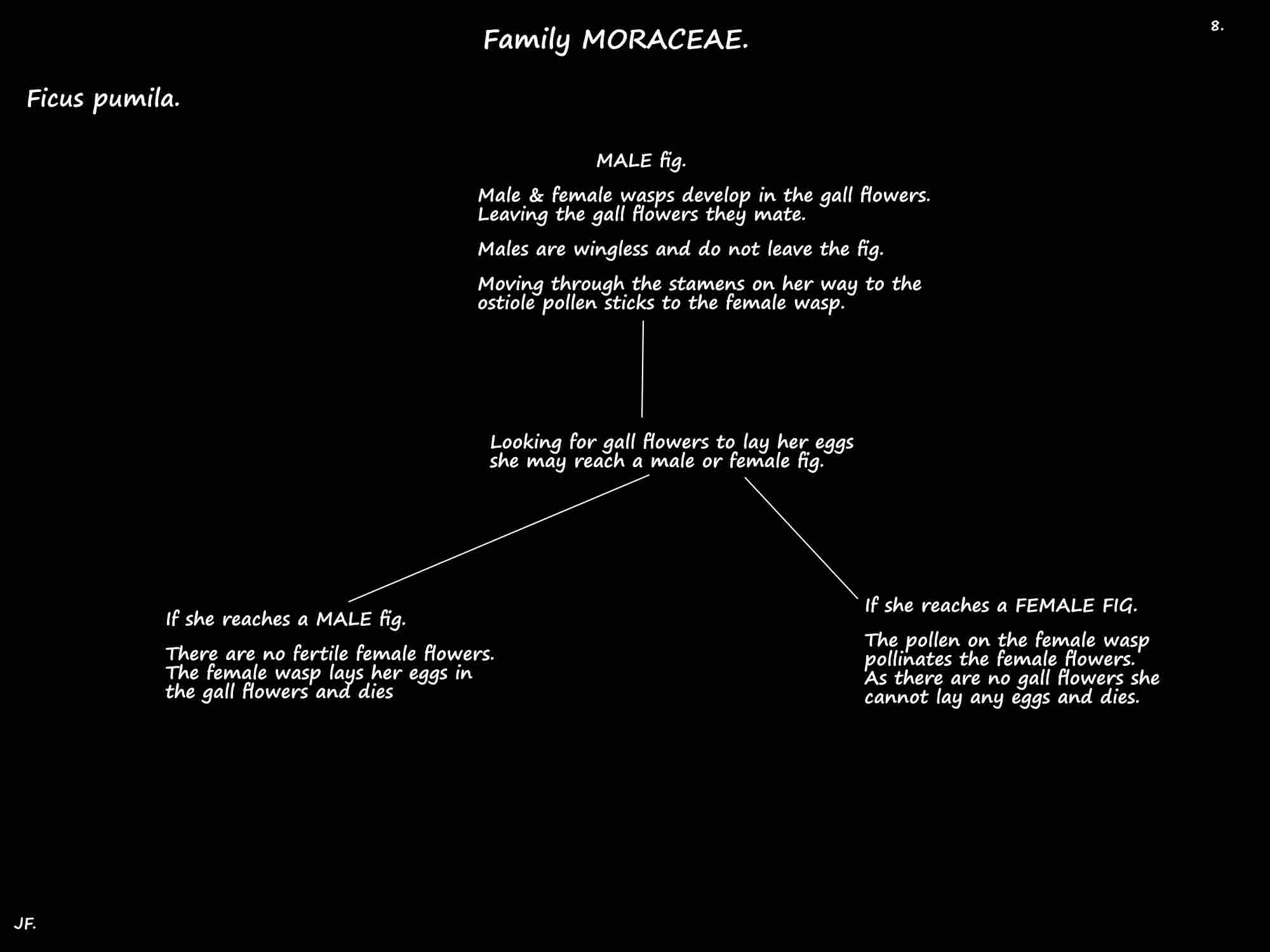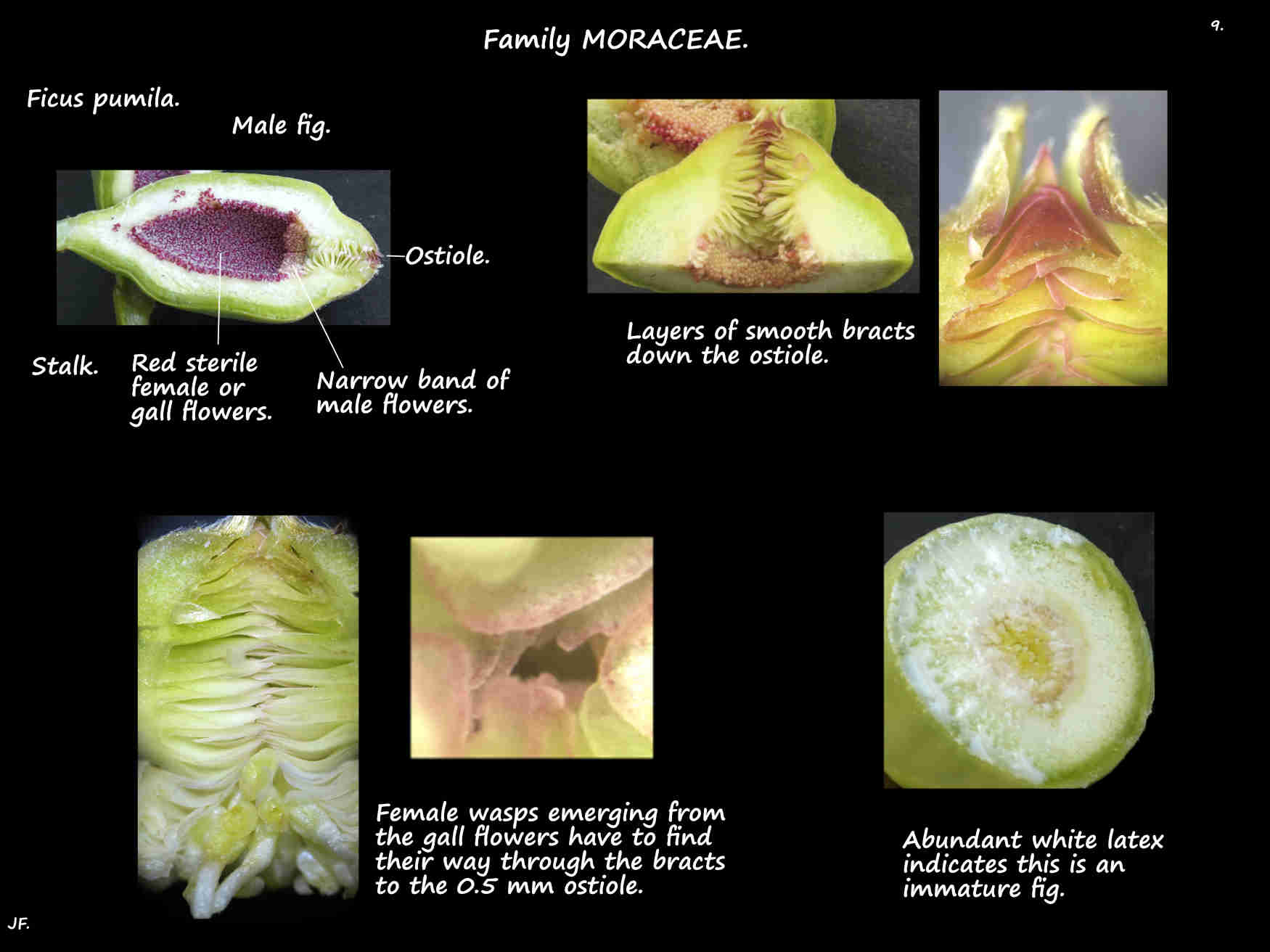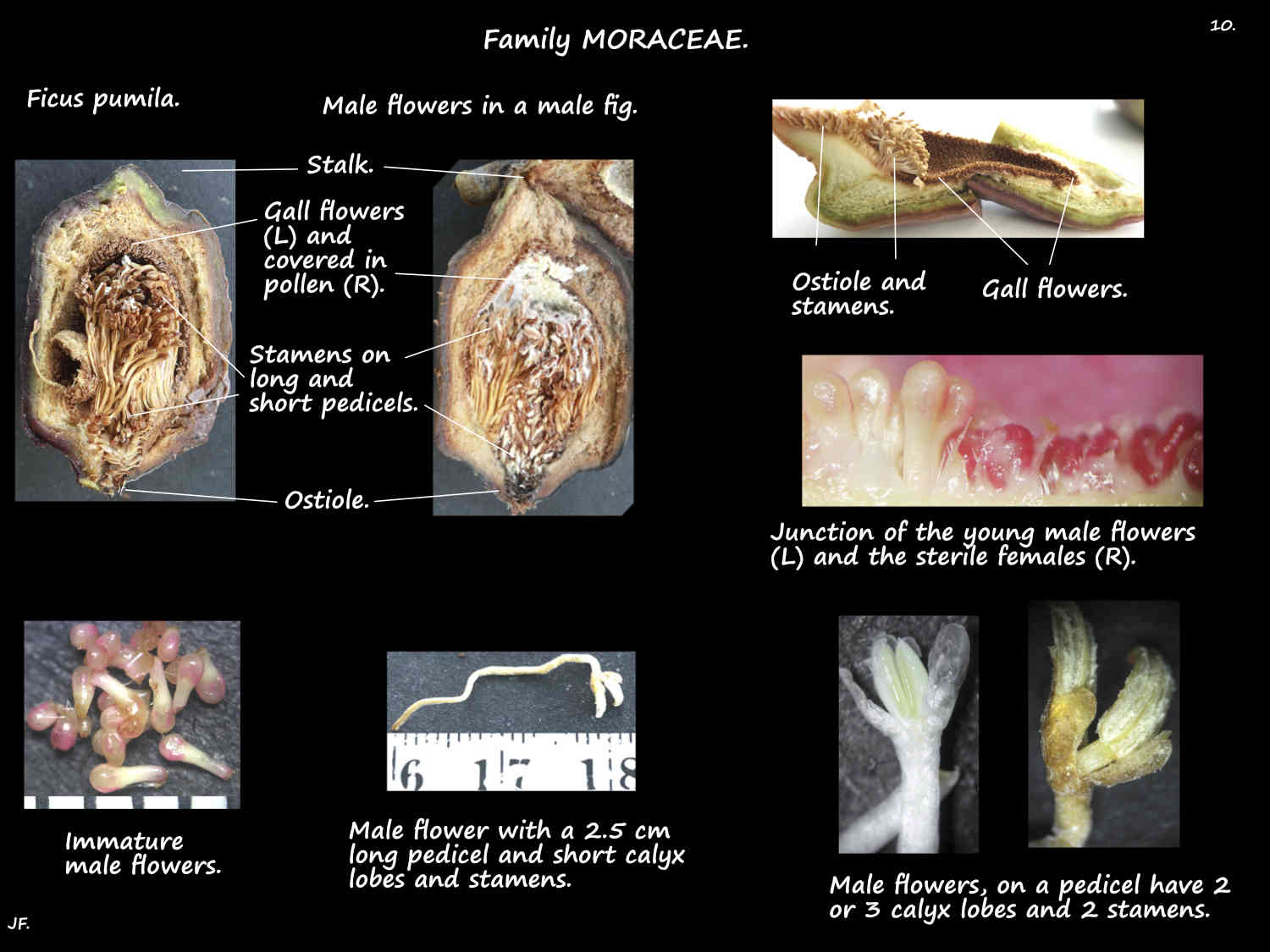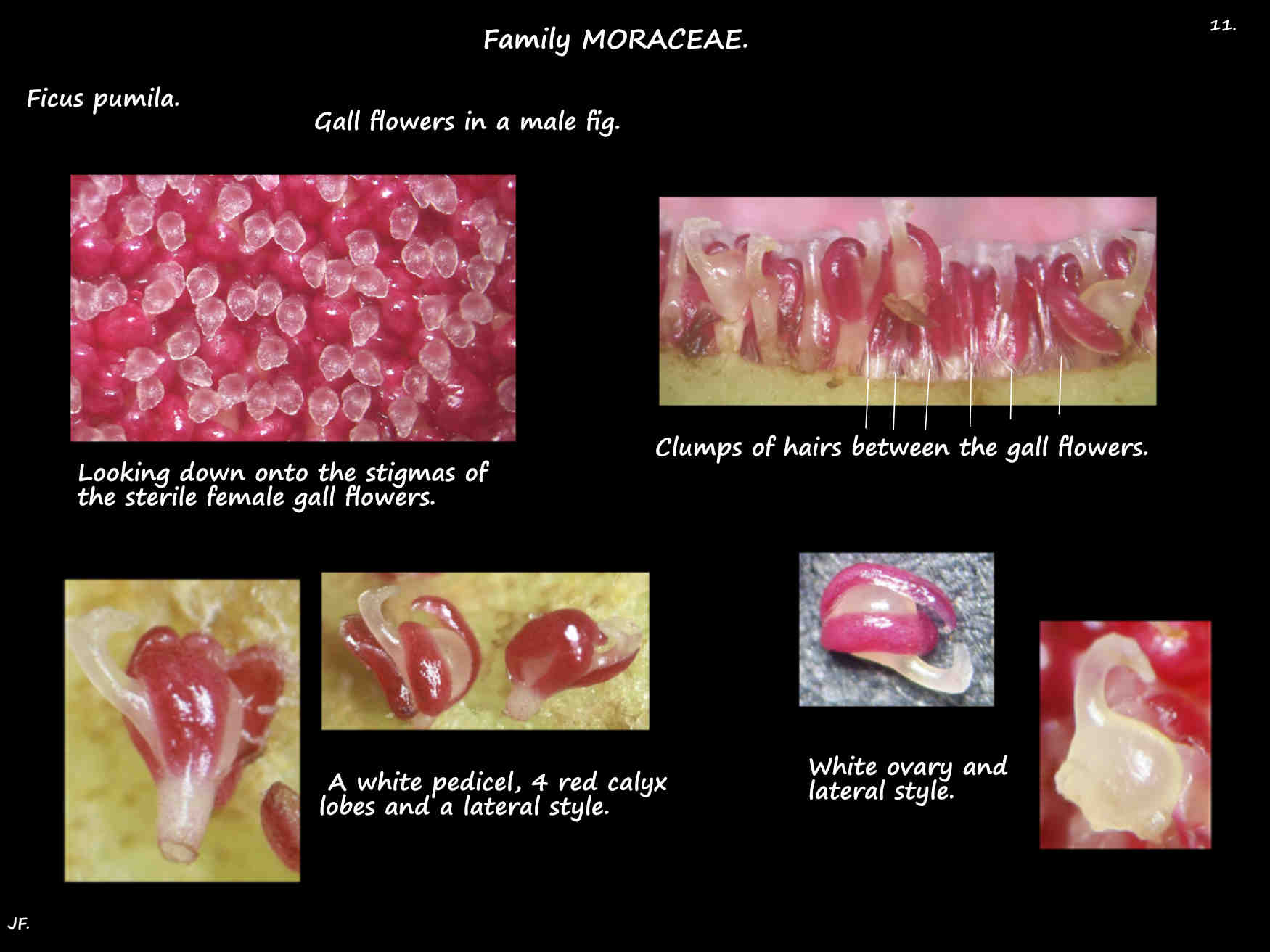Ficus pumila.
Family Moraceae > Tribe Ficeae > Genus Ficus > Subgenus F. subg. Synoecia.
The evergreen Creeping or Climbing fig is native to East Asia.
The juvenile and adult forms are quite distinct with the former being more commonly seen.
Stems can reach 15 m in length and all parts exude white latex when damaged.
Juvenile or rooting form.
Long thin freely branching stems carry alternately arranged leaves in 2 ranks.
Stems will creep along the ground or climb using adventitious roots that grow from the stem just below the nodes.
Latex secreted from the roots glues them to the substrate.
Young stems are reddish then green and they have simple hairs.
The simple leaves, on a short petiole are ovate to cordate.
Around 2 to 3 cm long they may have an asymmetric base.
New growth has a yellow or red tint then becomes a mid to dark green.
There are hairs on the petiole and both blade surfaces mainly underneath.
Veins, including the smaller cross ones are prominent on the lower surface.
There may be small bumps on the upper surface.
Adult or fruiting form.
Woody stems grow out and away from their supports, loose the hairs and have no adventitious roots.
The trunk and its main branches can be 10 to 15 cm across.
The dark green leathery leaves are up to 12 cm long with a petiole 1 to 2 cm long.
The blades are oblong, obovate to elliptic with some hairs on the paler lower surface.
The adult stems are the only ones that bear fruit.
Leaf buds are protected by lance-shaped stipules up to around 1 cm long.
Initially pale green they have long pale brownish hairs that lie flat along the surface.
The stipules soon die and become brown remaining for a time but eventually falling off.
Flowers develop in solitary axillary synconia found only on adult stems.
Mature figs are typically oblong to pear-shaped and 5 to 6 (8) cm long by 3 (5) cm wide.
The thick peduncle is up to 1.5 cm long.
Initially a pale yellowish-green they become purplish with pale spots around the distal end.
The scattered hairs on the surface become denser towards the tip.
The 5 to 6 mm long bracts around the opening or ostiole retain their dense white hairs.
Plants are either male or female with the inner surface of the synconia densely lined with flowers only 1 to 2 mm long.
Male figs have 2 types of flowers.
Male flowers lie just below the ostiole and sterile female or gall flowers cover the rest of the inner surface.
Male flowers, on a long or short stalk or pedicel have 2 or 3 pale narrow calyx lobes and 2 stamens on short filaments.
The anthers open through longitudinal slits to release white pollen.
Sterile female gall flowers, on a pedicel have 3 or 4 narrow reddish calyx lobes and an ovary with a short lateral style.
Female figs only have fertile female flowers.
On a long pedicel they have 4 or 5 narrow calyx lobes and an ovary with an apical style.
Each ovary has a single ovule which can develop into a seed.
A female wasp lays her eggs in the gall flowers of a male fig and when the new brood emerges the males and females mate.
Males have no wings and never leave the fig.
Pollen grains attach to the females as they work their way through the densely packed stamens on their way to the ostiole.
The winged females fly away and can land on a male or female fig.
Entering a female fig the fertile female flowers are pollinated as she searches for gall flowers in which to lay her eggs.
However, as there are no gall flowers she dies.
Entering a male fig the pollen is wasted but she lays her eggs in the gall flowers to complete the cycle.
J.F.
